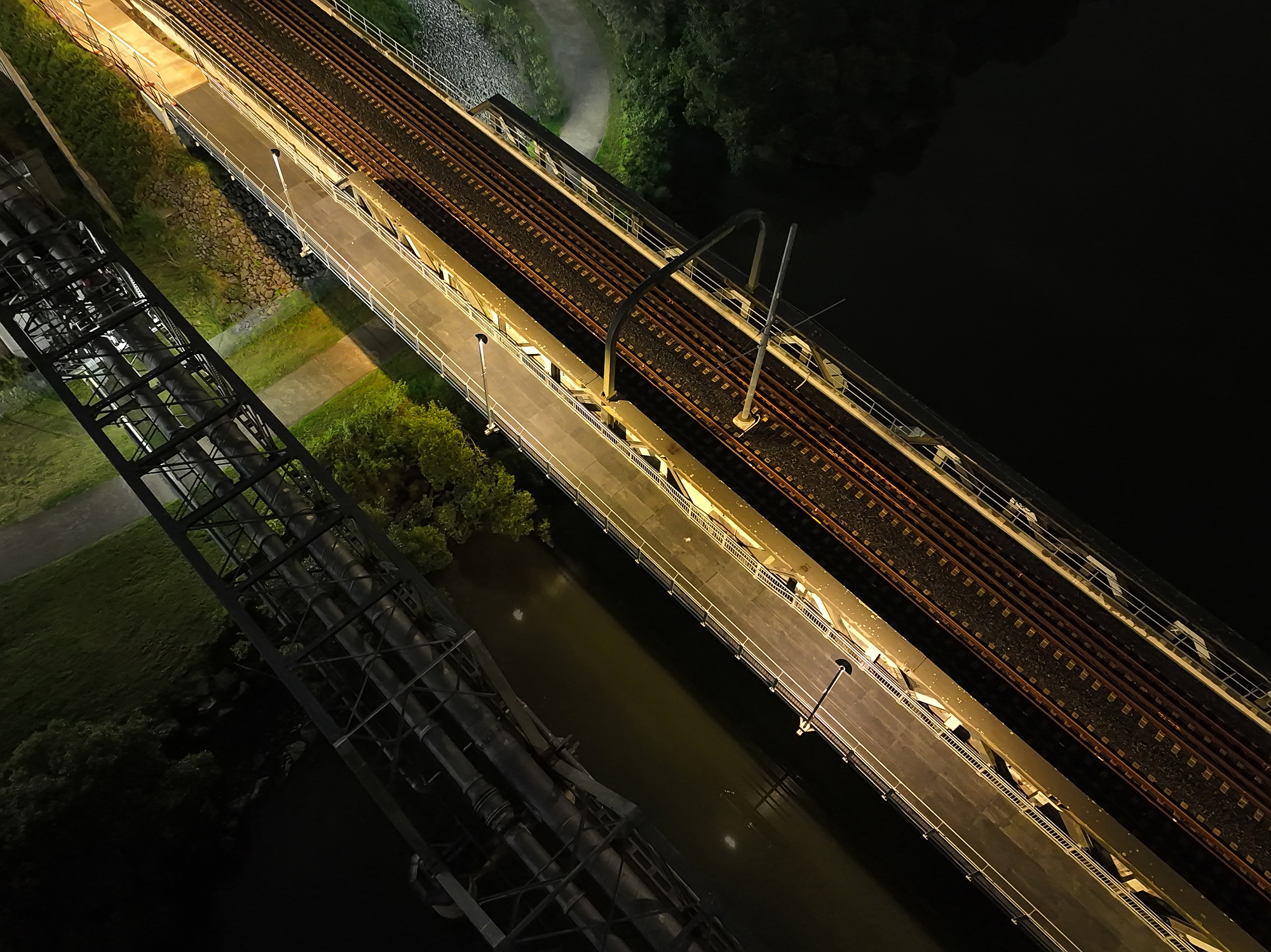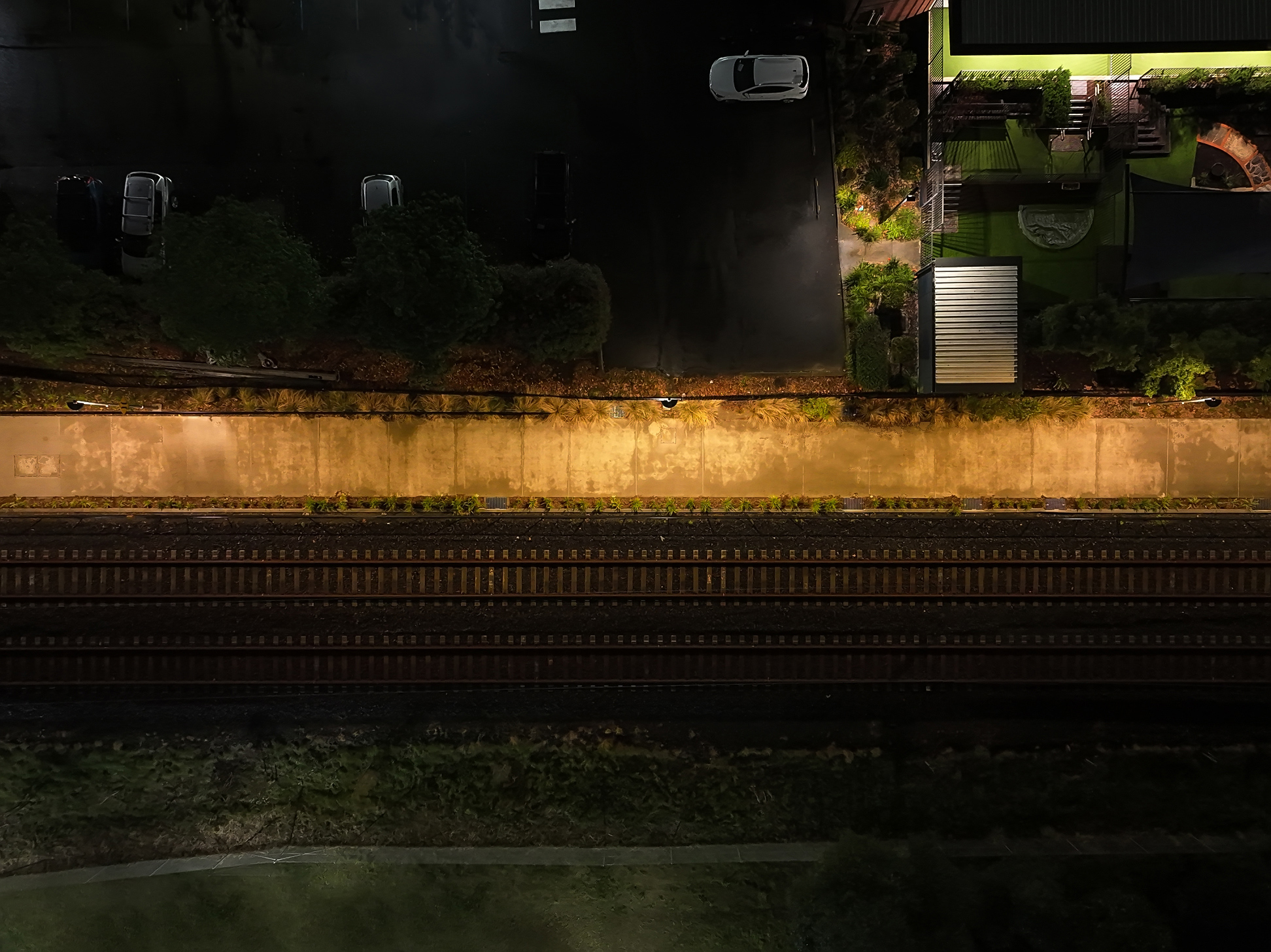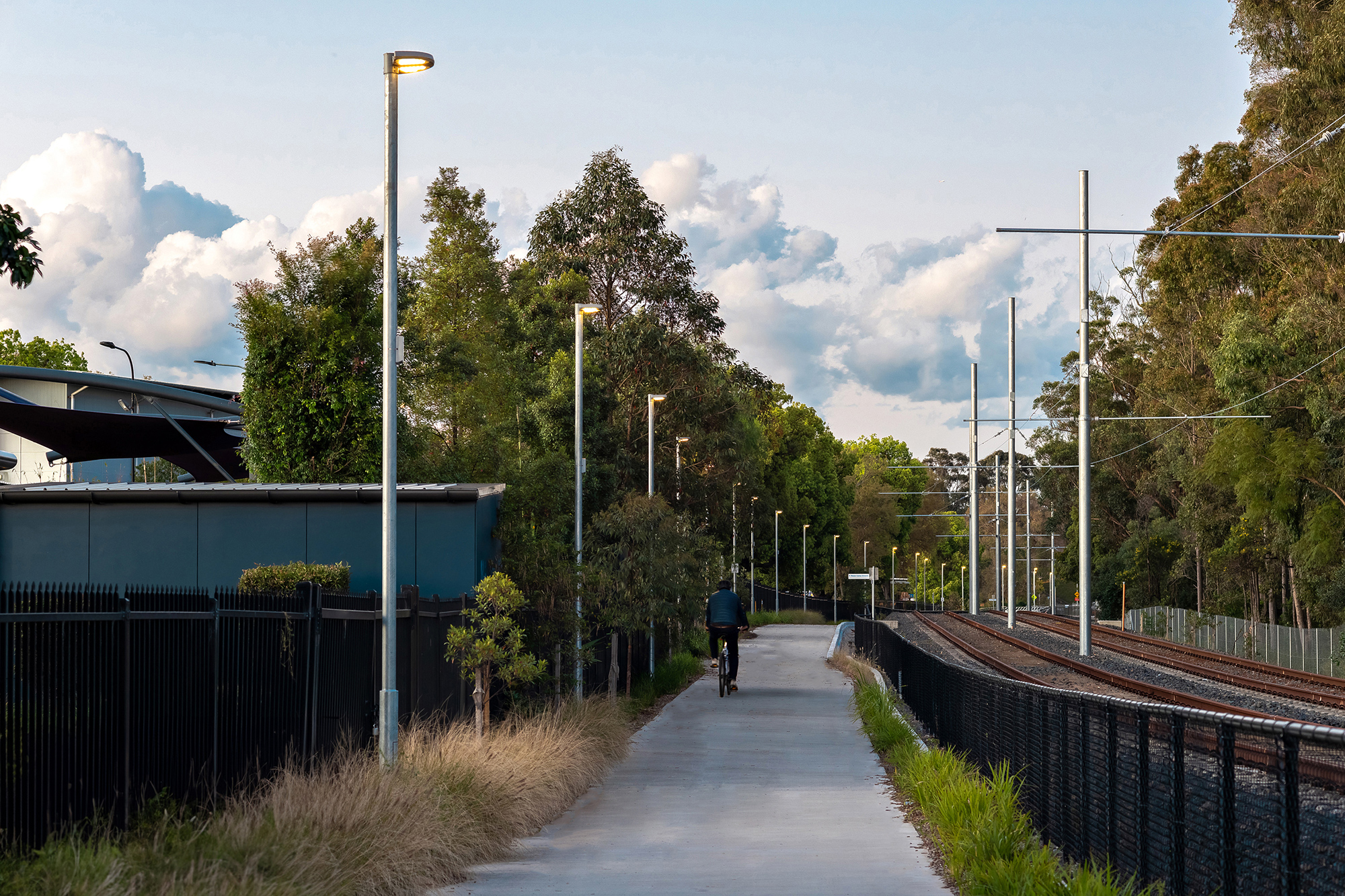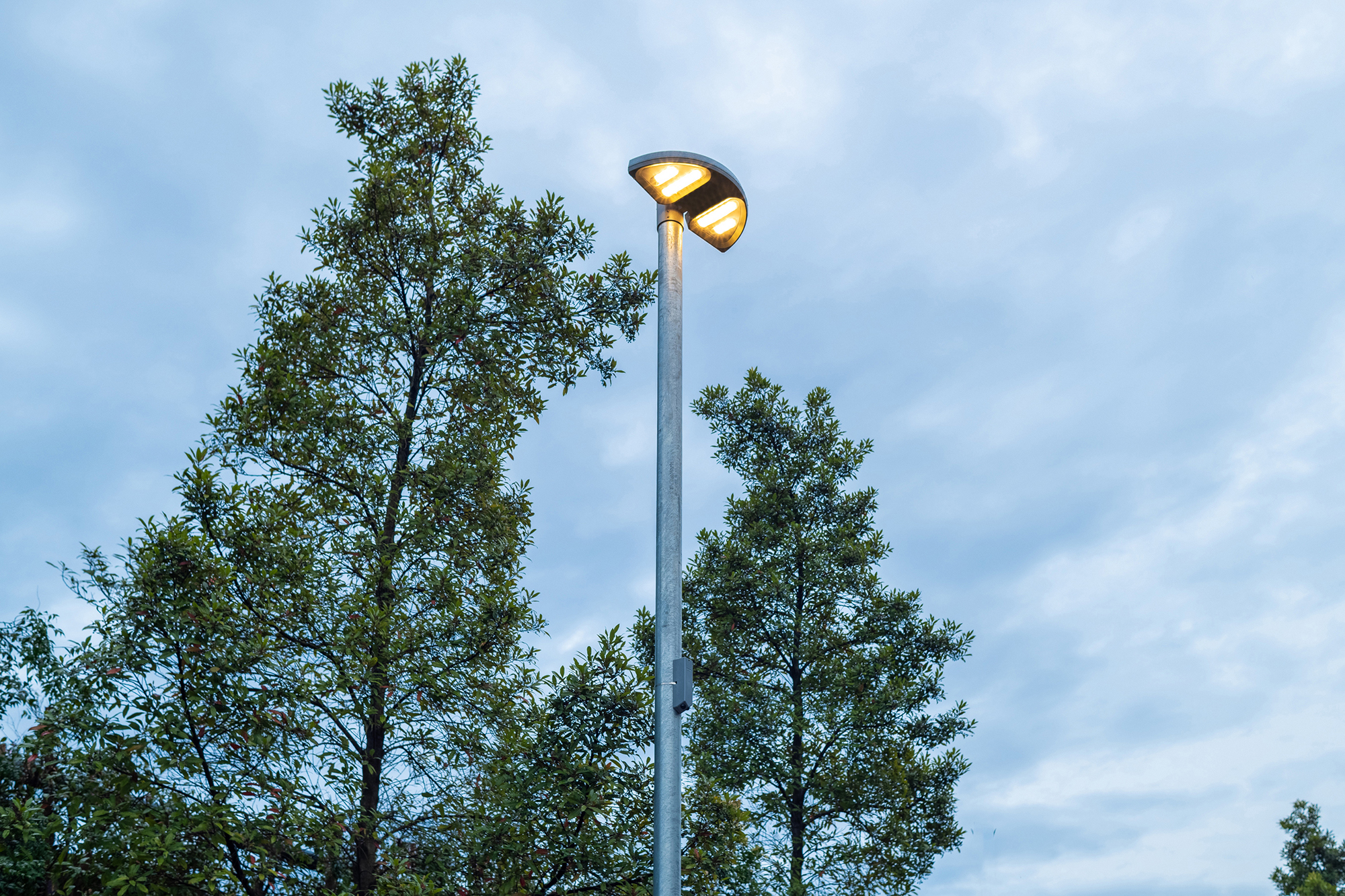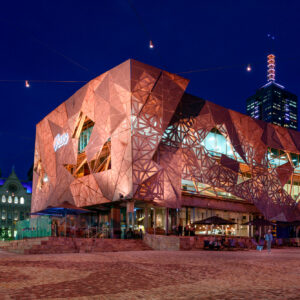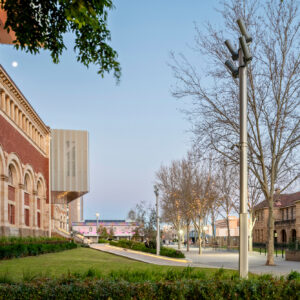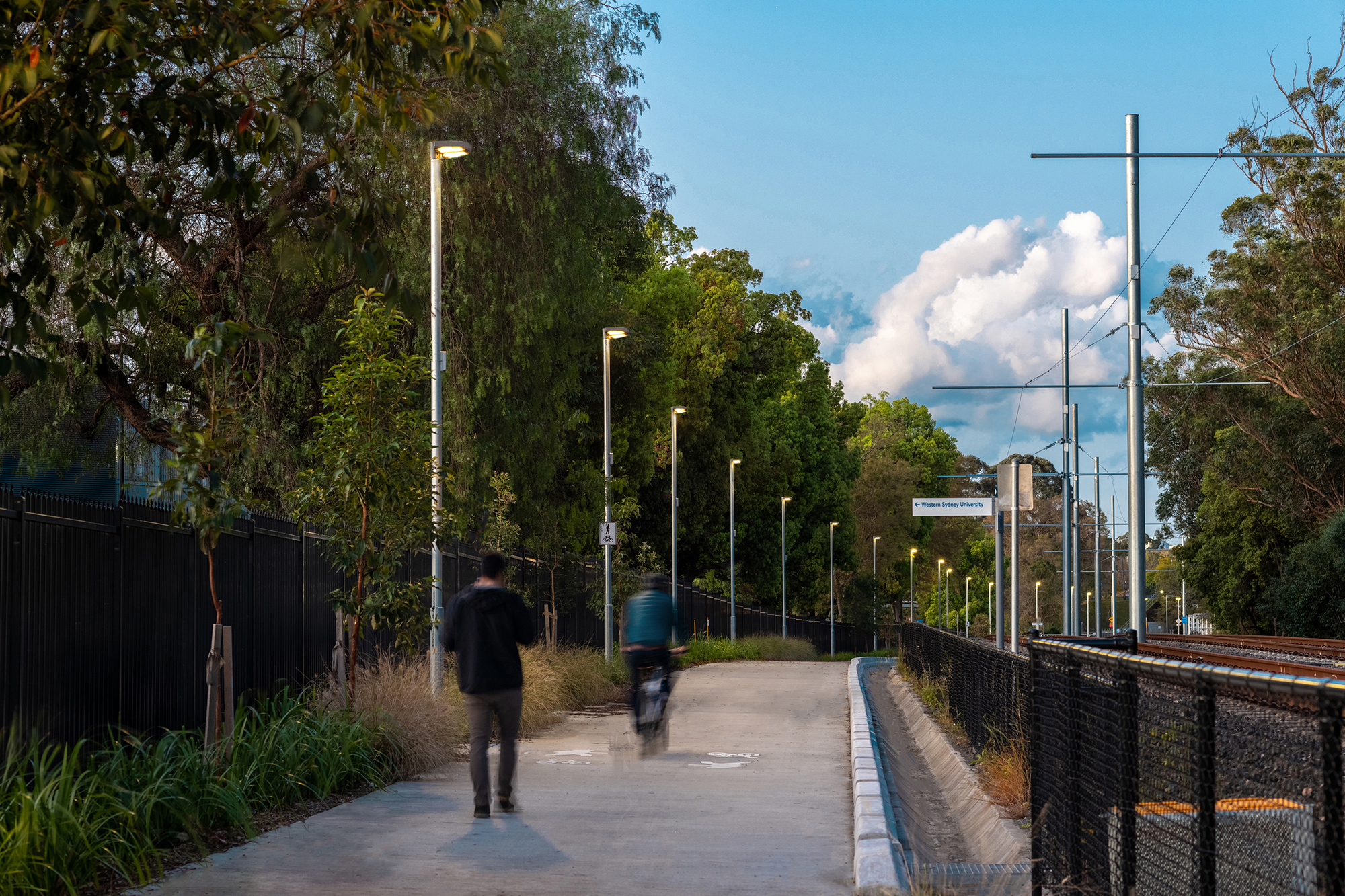
STREET & AREA LUMINAIRES, SMART LIGHTING
Striking the balance between amenity, safety and environmental preservation with smart lighting control technology at Parramatta Light Rail
- Completed2022
- Key StakeholdersTransport for x NSW, Parramatta Connect, City of Parramatta City Council, Aurecon, WSP
- Sales PartnerBuckford Illumination Group (NSW)
- Photography and VideographyIP Media
Transport for NSW, in collaboration with Parramatta Connect, City of Parramatta City Council, Aurecon, WSP, Buckford Illumination Group (NSW) and WE-EF, sought to implement a sustainable and energy-efficient lighting solution for the ‘Active Transport Link’, a new 5.7-kilometer shared walking and bike riding path between Carlingford and Parramatta. This initiative is part of the larger Parramatta Light Rail project, which connects Westmead to Carlingford via the Parramatta with a two-way track spanning 12 kilometres.
Considerations:
The driving force behind this initiative was to strike a balance between providing a sustainable lighting solution for enhanced safety and accessibility while minimising negative impacts on the natural environment and nearby residents. Given the ‘in use’ phase of a luminaire represents 80-90% of its total carbon footprint when analysing the overall product lifecycle, the key stakeholders of this project were keen to proactively pursue opportunities to reduce that footprint through leveraging smart lighting controls.
Key considerations included:
– ADSA Approved luminaires to preserve the beauty in darkness and minimise light pollution, in an area that was previously not illuminated (ecological consideration)
– Ensure safety and amenity for users at the lowest necessary light levels
– Deliver high performance combined with efficiency in energy consumption, limiting carbon footprint
– Luminaires of robust quality able to withstand environmental conditions requiring minimal maintenance and providing longevity
– A comprehensive warranty and service support, particularly with commissioning new technology
– A future-proofed smart solution that is scalable and able to be integrated into a smart city network
Challenges
“Only light when needed” was the underlying vision throughout this project. We aimed to deliver a solution that minimised overall light output, light pollution and energy consumption, consciously preserving the natural environment whilst still ensuring accessibility, safety and security for users. Being the first large-scale pathway lighting installation that would be installed with an active dimming and mesh network in Australia, commissioning support and thorough planning were going to be critical to ensuring a smooth functional installation.
Solution
The solution incorporates a Standalone OnPole PIR solution, which enables selective illumination of the pathway based on occupancy. The project utilises 276 WE-EF RMC320 luminaires with WE-EF’s OnPole Standalone PIR controller to provide an innovative lighting system. WE-EF’s Standalone connectivity solution allows customised dimming and presence sensing (motion detection), including recognising the direction of the person approaching (unique in the market). By implementing this technology, the project achieves a human-centric lighting approach that reduces light pollution and minimises energy consumption. When occupants leave the sensor range, luminaires dim down.
During commissioning, a dongle linked to an Android app adds the luminaires with the OnPole controller to a project. This project forms a network that allows the OnPole controller to communicate at 918MHz, far exceeding the range of other systems. For the Parramatta Light Rail project, there is a gap of 300 metres without an OnPole controller across Kissing Point Road, yet the network can bridge this gap where other systems would struggle. The system is also designed to integrate with smart city management systems, making it a versatile and future-proof solution.
Results:
Analysis of similar European projects demonstrates that this system can achieve energy savings ranging from 51% to 63%. With the lighting design compliant with the requirements of the AS4282 standard for obtrusive glare and WE-EF’s precise optic control, this lighting solution provides optimum visual conditions for users while preventing obtrusive light for nearby residents. Additionally, the system supports sustainable production by utilising recycled materials, with the luminaires being made from >90% authentic refined, recycled aluminium.
The Parramatta Light Rail project is the first large-scale pathway lighting with an active dimming and mesh network in Australia. By delivering this solution we move away from traditional outdoor lighting where luminaries remain on all night, to an approach that is both human-centric and switches off / dims when not needed. Additionally, the system can extend beyond lighting and become IOT-connected nodes. The luminaire data can be integrated into a smart city management system, as the smart lighting control system is a secure open-source system.
Illuminating an area that was dark (prior to Active Transport Link construction) demanded ecological, social and economic considerations. The driving force was to strike the balance in providing a sustainable lighting solution that enhances the safety and accessibility of the area, to meet the needs of a growing Sydney while minimising impacts on the natural environment and nearby residents.
The WE-EF On Pole Standalone PIR OnPole controller is flexible and able to adapt as technology advances. This sustainable lighting project effectively meets the needs of those who use the space, reducing output at times of day where governed levels are required, creating an exterior space that is functional when needed and dims back to a low level to minimise the impact on surrounding neighbours and wildlife.
Ultimately, our ability to cleverly integrate smart control technology that minimises light pollution and reduces energy consumption is critical to the future co-existence of humans and the natural ecosystem. There is huge potential for us to decrease the ‘in use’ phase of a luminaire’s carbon footprint, thereby benefiting the ecosystem and saving money.
